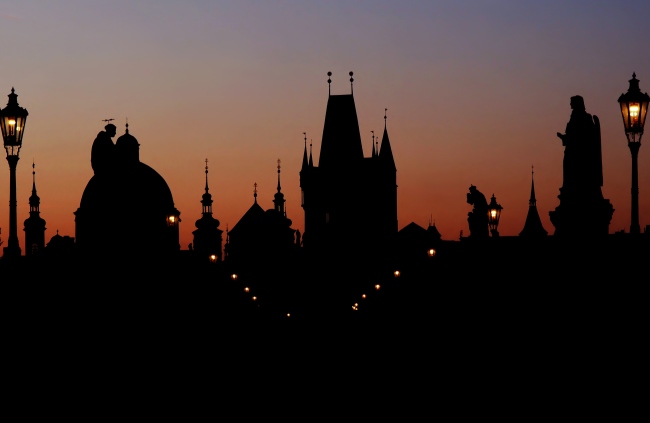Bohuslav Martinů, Symphony No. 3
by Jon Meadow
Born December 8, 1890, in Polička, Czechoslovakia
Died August 28, 1959, in Liestal, Switzerland
Composed in 1944
Premiered on October 12, 1945 in Boston by the Boston Symphony Orchestra conducted by Serge Koussevitsky
Performance Time: Approximately 30 minutes
Before coming to New York City in 1941 as a political refugee, Czechoslovak composer Bohuslav Martinů obtained recognition internationally in a variety of musical genres and styles. Until his American residency, however, Josef Suk’s former student avoided the conventional symphony. When he composed for the orchestra, he preferred to work in the neobaroque concerto grosso genre, which relies upon the alternations between groups of solo instruments and full orchestra. Martinů, ever the consummate professional, attuned himself to the moods and tastes of his new wartime American market. He composed the first five symphonies between 1942 and 1946. The sixth came a little over a decade later. The Third Symphony, which Martinů composed without a commission in Ridgefield, Connecticut, premiered in Boston on 12 October 1945. It unfolds in three movements instead of the more conventional four.
In each movement, Martinů mobilizes what he called “germs,” or endlessly generative, particle-like melodic cells. Similar to Suk’s offering, the charm of Martinů’s Third Symphony is equally attendant upon the composer’s treatment of rhythm, meter, orchestral color (especially percussion), and dynamics as it is on harmonic and melodic planning. The contrasts of the Allegro poco moderato’s opening are representative of how such treatment cuts across the symphony.
Following an arresting fortissimo sonority and a subsequent brief, dramatic pause, Martinů commences an addition of melodic germs in the violins and woodwinds. Serving in a percussive capacity, the hushed piano and harp, sounding at low and high extremes of register, respectively, provide a steady pulse and sense of meter. However, Martinů’s stacking of syncopated melodic germs fog such efforts at metric legibility. But the tables turn. The impulses of the charismatic woodwinds and strings become clear pulses, and the piano and harp hammer out descending, fortissimo impulses, obfuscating the meter once again.
From one perspective, Suk’s scherzo being programmed beside Martinů’s symphony provides Martinů’s work with the jocular dance movement that it was missing. From another, Martinů’s symphony is dressed up in the clothes of a fantastic scherzo. Therefore, the programing possibly offers two fantastic scherzi where once there was one.
Jon Meadow is a Ph.D. student in Historical Musicology at New York University. His work is focused on the roles of humor and comedy in Bohuslav Martinů’s Great Depression theatre reforms.

